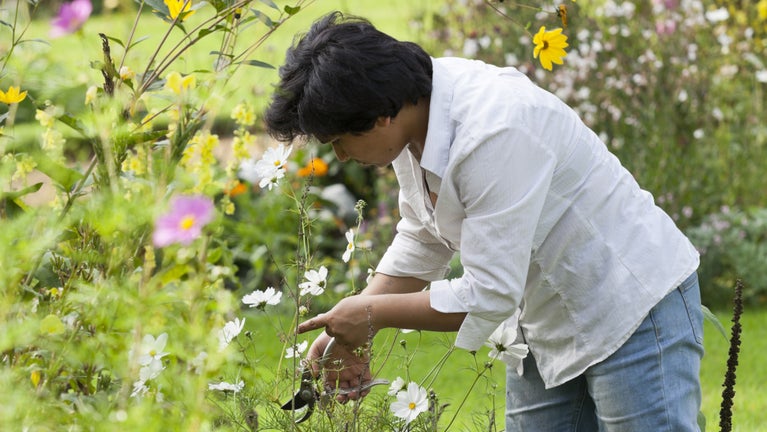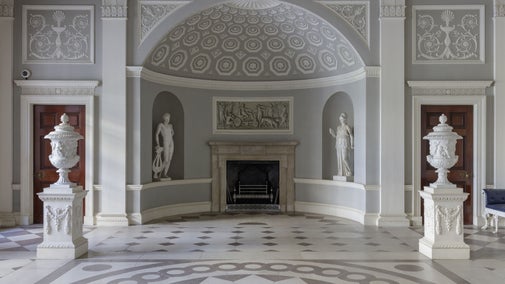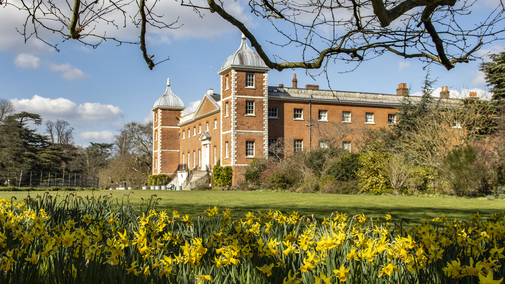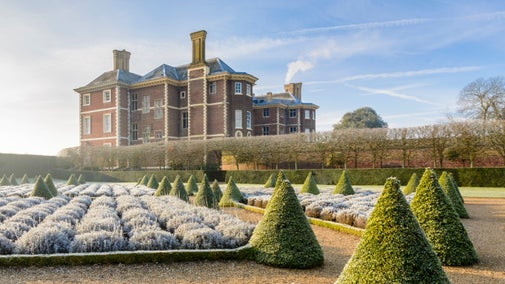
Discover more at Osterley Park and House
Find out when Osterley Park and House is open, how to get here, the things to see and do and more.

Osterley Park's formal garden was transformed during a six-year project from an overgrown wilderness back to its 18th-century grandeur with herbaceous borders, roses and ornamental vegetable beds. With bulbs springing to life in the garden throughout the year and garden buildings to explore, there's plenty to enjoy whatever the weather.

In the cold of winter there’s still life in the gardens of Osterley Park and House. With the winter garden designed to display seasonal beauty and snowdrops scattered around, there's plenty to see on a winter walk.
The garden team have been developing the winter garden for a number of years and the seasonal trees, shrubs, herbaceous perennials and bulbs all have colourful or interesting leaves, bark, stems or flowers in the winter months. These are at their best when light levels are low and when the sun’s low angle lights up their bright stems.
The three main types of winter flowers in the garden are Clematis urophylla ‘winter beauty’, Iris reticulata ‘George’, and snowdrops – these can be found near the Temple of Pan, hidden behind the garden house, in the flower picking garden, and around the Long Walk.
Grab a winter warmer from the Stables cafe, and take a tranquil stroll around the grounds. Why not bring your four-legged friend along to as part of our 'Winter Walkies' season, running until March, where dogs on leads are allowed into the formal gardens.
This semi-circular building, built in 1780 and designed by Robert Adam, is a fascinating feature of the garden set among the borders of Mrs Child’s Flower Garden. Used to entertain guests, Mrs Child filled the Garden House with exotic scented plants, including grapes, pineapples and, according to the 1782 inventory, ‘Forty-five Orange and Lemon trees in tubs’.
In celebration of this, our garden team continue the tradition each year by displaying various plants in the Garden house for visitors to see. Currently, we have our seasonal spring display on show which hosts a variation of colourful flowers including tulips, amaryllis and allium and other exotic-scented plants which bring together a stunning and captivating show revealing the beauty of blossom.
Sarah Child lived at Osterley between 1763 and 1793 and was a passionate gardener, filling the space in front of the Garden House with fashionable and exotic plants, which have been faithfully recreated for visitors to enjoy.
The garden features a series of beds, radiating out from the Garden House with paths twisting and turning through them. The flower beds would have been planted with a tall plant, shrub or tree in the centre, with colourful flowers of lesser height around it.

One of the most loved features at Osterley is the Tudor walled garden. This part of the garden is split into sections, with space for the garden team to grow a wide range of plants which are sold in the second-hand bookshop, and a cutting garden which supplies beautiful flowers throughout the year for the display in the house. The long border at the top of the garden is traditionally planted with shrubs and perennials for year-round interest.
Over the years the gardening team have turned a derelict patch of ground within the walled garden into an organic ornamental vegetable garden, and it's here that they experiment with interesting and unusual planting.
The vegetable garden is divided into four plots; one is given over to more traditional cropping, the second is mainly a pumpkin patch, and the last two plots are creative zones planted with a mix of brassicas, dahlias, antirrhinums, zinnias and amaranths.
A commitment to organic gardening at Osterley Park and House has seen a growth in wildlife, from hedgehogs to birds. The garden team stopped using fungicides and insecticides a number of years ago and limits its use of weedkillers to a small number of paths around the estate.
The difference has been most obvious in the Great Meadow, where layers of biodiversity can now be seen, from the insects and small mammals to the larger birds of prey such as owls, kestrels and red kites which feed on them.

Find out when Osterley Park and House is open, how to get here, the things to see and do and more.

Discover what to see in the house at Osterley Park. Explore the grand rooms designed by architect Robert Adam for the Child family and find out about life above and below stairs.

Explore the parkland and estate at Osterley Park and House. Discover what to see and do in the wider estate, from picnics by the lake to bird spotting.

Discover where to eat and drink at Osterley Park and House. Stop for refreshments in the historic Tudor courtyard and browse the shops for gifts and pre-loved books.

Discover the history of Osterley Park. Find out about the architect who transformed the mansion into a fashionable palace and the family who lived there.

From bike rides to den building, discover the full range of family-friendly activities and events taking place at Osterley Park.

From 18th-century water gardens and Arts and Crafts landscapes to intimate woodland gardens, there are so many places to discover.

Discover our gardeners’ top tips so you can make the most of your garden, plot or window box.

Discover a variety of plants and interest in gardens across London, from spring bulbs bursting into life, and colourful summer roses to golden autumn leaves and frosty topiary.